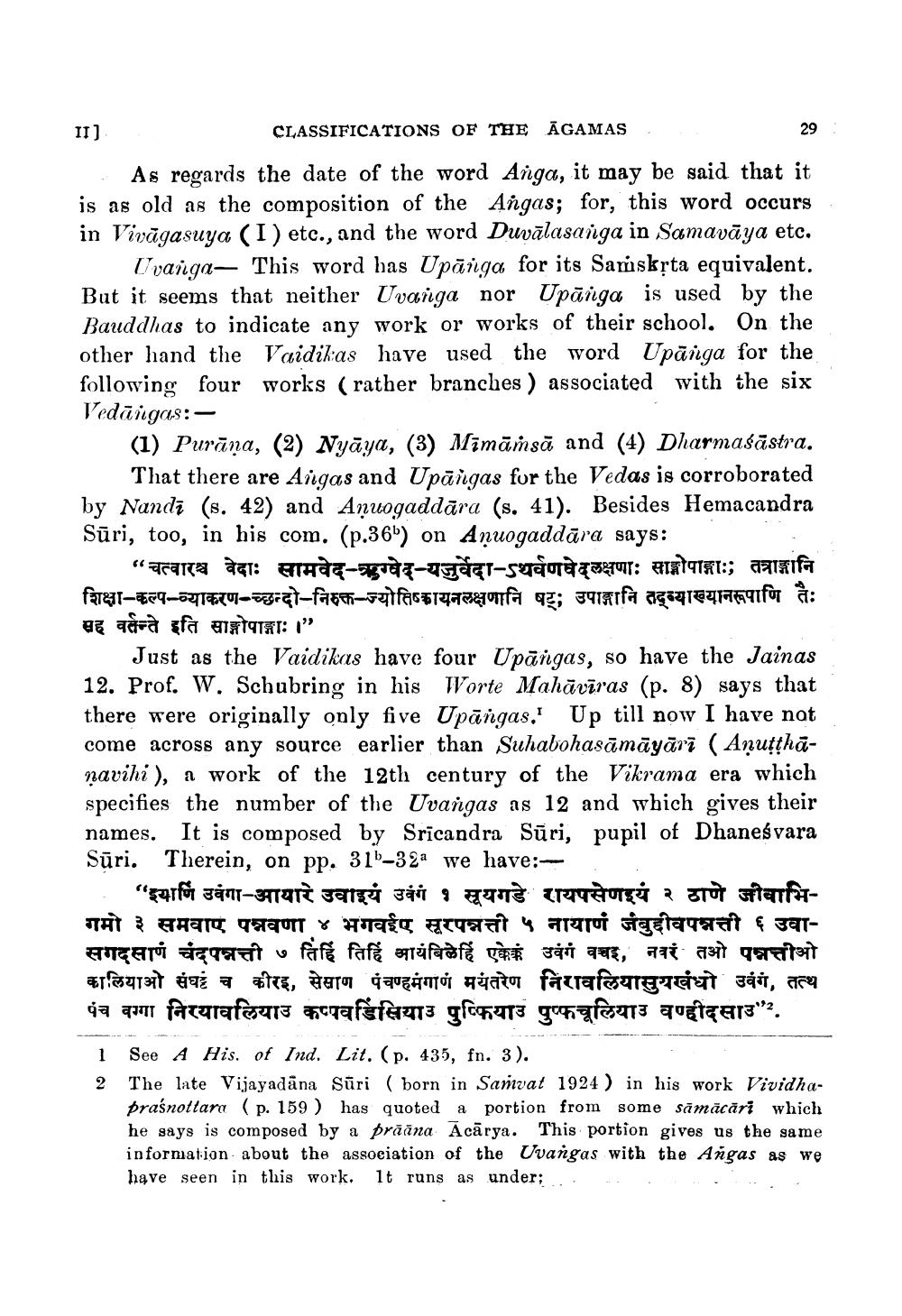________________
II] CLASSIFICATIONS OF THE ĀGAMAS
29 As regards the date of the word Anga, it may be said that it is as old as the composition of the Angas; for, this word occurs in Vivāgasuya (I) etc., and the word Duvālasanga in Samavāya etc.
Uvanga- This word has Upānga for its Saniskrta equivalent. But it seems that neither Uvanga nor Upānga is used by the Bauddhas to indicate any work or works of their school. On the other hand the Vaidikas have used the word Upānga for the following four works (rather branches ) associated with the six Jedaiigas:
(1) Purāņa, (2) Nyāya, (3) Mimāṁsā and (4) Dharmaśāstra.
That there are Angas and Upāngas for the Vedas is corroborated by Nanda (s. 42) and Antogaddara (s. 41). Besides Hemacandra Sūri, too, in his com. (p.366) on Aņuogaddāra says:
"चत्वारश्च वेदाः सामवेद-ऋग्वेद-यजुर्वेदा-ऽथर्वणवेदलक्षणाः साङ्गोपाङ्गाः; तत्राङ्गानि शिक्षा-कल्प-व्याकरण-च्छन्दो-निरुक्त-ज्योतिष्कायनलक्षणानि षद्; उपाङ्गानि तव्याख्यानरूपाणि तैः सह वर्तन्ते इति साङ्गोपाङ्गाः।"
Just as the Vaidikas have four Upāngas, so have the Jainas 12. Prof. W. Schubring in his WVorte Mahāvīras (p. 8) says that there were originally only five Upangas,' Up till now I have not come across any source earlier than Suhabohasāmāyārī (Anutthānavihi), a work of the 12th century of the Vikrama era which specifies the number of the Uvangas as 12 and which gives their names. It is composed by Sricandra Sūri, pupil of Dhaneśvara Sūri. Therein, on pp. 316–32a we have:
- "इयाणि उवंगा-आयारे उवाइयं उवंग १ सूयगडे रायपसेणइयं २ ठाणे जीवाभिगमो ३ समवाए पनवणा ४ भगवईए सूरपन्नत्ती ५ नायाणं जंबुद्दीवपन्नत्ती ६ उवासगदसाणं चंदपन्नत्ती ७ तिहिं तिहिं आयंबिलेहिं एकेकं उवंग वश्चइ, नवरं तओ पन्नत्तीओ कालियाओ संघटं च कीरइ, सेसाण पंचण्हमंगाणं मयंतरेण निरावलियासुयखंधो उवंग, तत्थ पंच वग्गा निरयावलियाउ कप्पवडिंसियाउ पुफियाउ पुष्फचूलियाउ वण्हीदसाउ"2. 1 See A His. of Ind. Lit. (p. 435, fn. 3). 2 The late Vijayadāna Sūri (born in Samvat 1924 ) in his work Vividha
praśnottara (p. 159 ) has quoted a portion from some sāmācāri which he says is composed by a prāāna Acārya. This portion gives us the same information about the association of the Uvangas with the Angas as we have seen in this work. It runs as under; . . .




